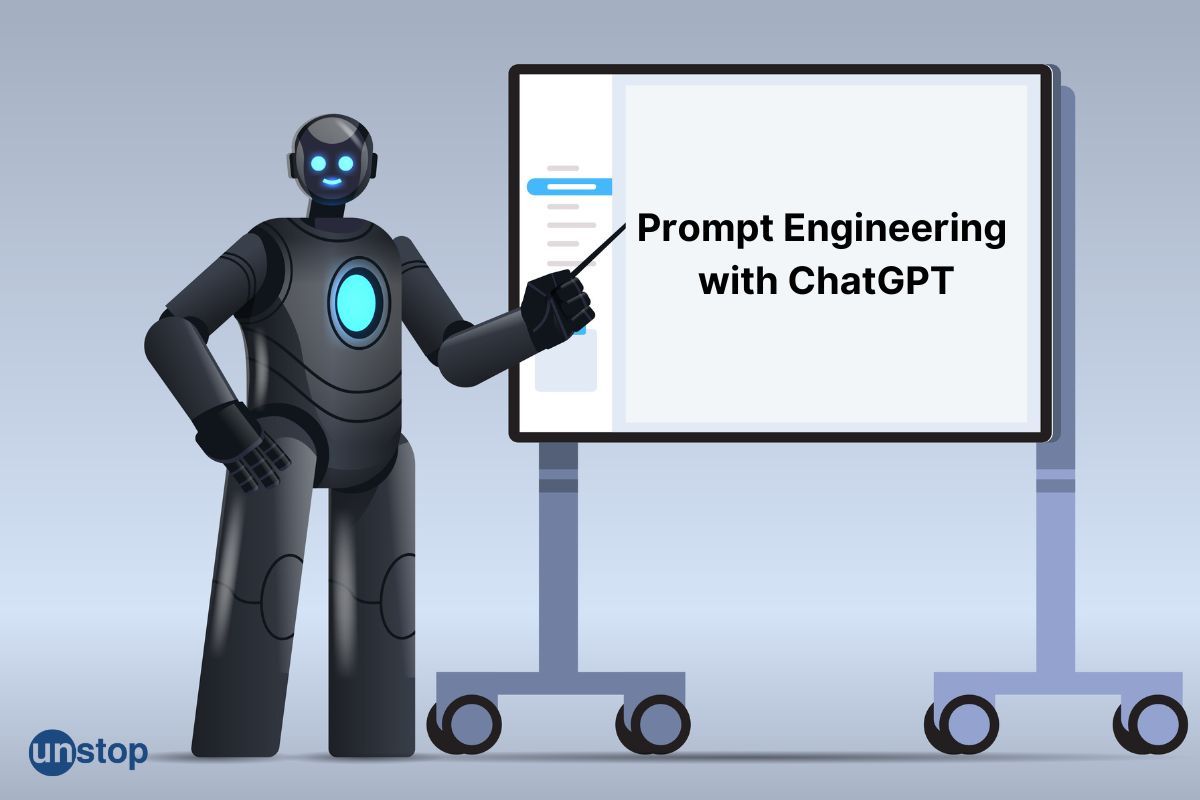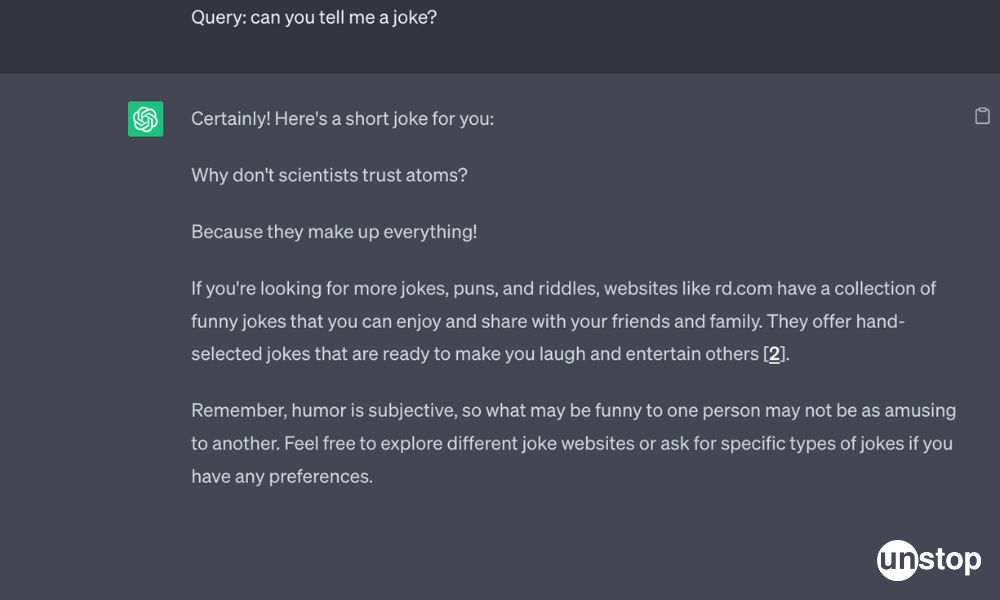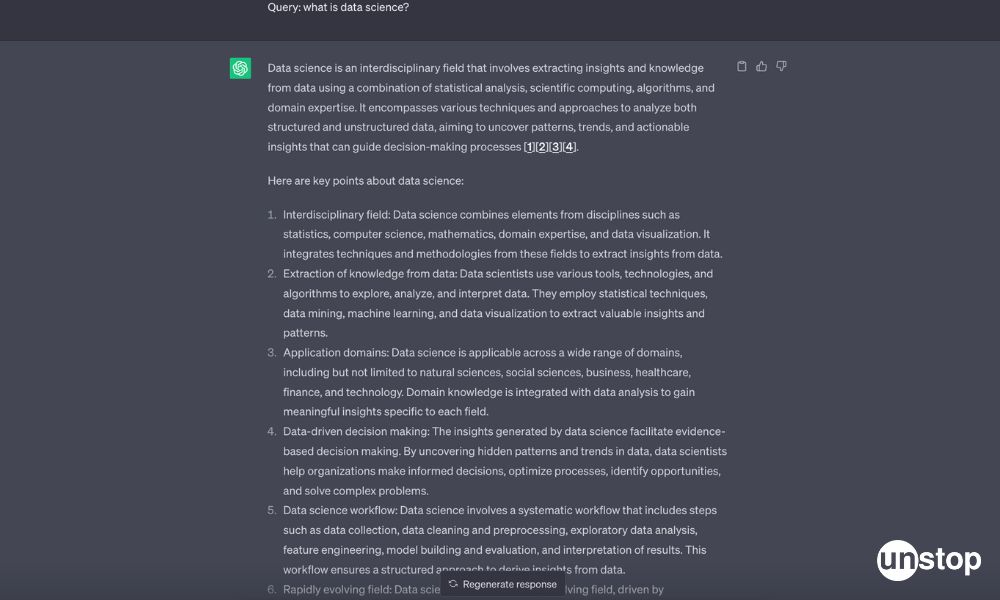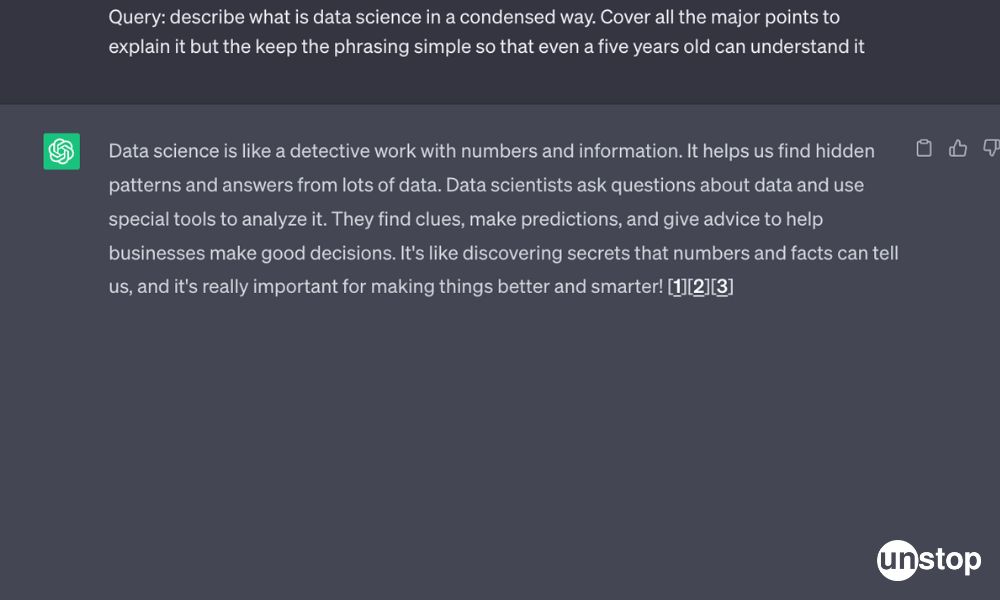- What is Prompt Engineering?
- How to Identify Effective Prompts?
- Best Practises for Writing Prompts
- More Prompt Engineering Best Practices for ChatGPT
Learn About Top Prompt Engineering Best Practices For ChatGPT

Artificial Intelligence (AI) has become a part of everyday life. AI-based technologies like ChatGPT can be likened to the internet phase. When the internet was a new invention very, few people could understand how to use it. But those who mastered it went on to revolutionize the world. Similarly, those who can create magic with a simple ChatGPT prompt will have a prosperous future. So, in order to compete with other professionals, you must be aware of prompt engineering best practices for ChatGPT.
If you can work around prompts, then AI cannot pose a threat to your job. You must have heard that ChatGPT will take away your job in the future. We don't know whether AI will become powerful enough to threaten your job, but one thing that we are sure about is those who know how to use AI will definitely pose a tough challenge to you.
Let's begin our journey of learning about prompt engineering best practices for ChatGPT. We will learn how you can generate effective prompts for ChatGPT.
Before we have a thorough prompt engineering best practices for ChatGPT, let's understand what is prompt engineering and how it is used with ChatGPT.
Have a deeper understanding of ChatGPT: Learn How ChatGPT For Machine Learning Works: A Beginner's Guide
What is Prompt Engineering?
Prompt engineering basically refers to the process of writing well-defined and accurate prompts or commands for AI-based technologies. It is an important skill because only an accurate prompt ensures that the AI bot is able to generate the relevant response. This is where prompt engineering becomes crucial.
Prompt Engineering is a subdiscipline of Natural Language Processing (NLP). It involves not only delivering the task description clearly but also including it in the input itself. It is typically done in the form of an instruction. Prompt engineering aims to direct the AI model's answers and enhance its performance on specific tasks by adding task knowledge to the input.
Prompt engineering often involves converting one or more activities into a dataset of prompts and then using this dataset to train structure language model responses. As a result of this, the model is better equipped to generate accurate responses by learning the patterns and context related to the intended activity.
A wide range of prompt engineering methods, such as "prefix-tuning" or "prompt tuning," are employed where a pre-trained language model is "frozen" or maintained constant. Only the prompt representation is enhanced or tailored for the particular job.
Prompt engineers have to combine their AI knowledge with creativity. A huge number of generative AI systems can use prompt engineering to improve their inputs in order to produce text or graphics.
How to Identify Effective Prompts?
The practice of identifying effective prompts also comes in handy if you are a prompt engineer. Companies pay professional prompt engineers handsomely because they use their skills to generate accurate and innovative prompts. It helps these companies increase their productivity manifolds and stay ahead of their competitors.
We have brought some tips which would help you identify effective prompts. Let's get started!
Understand the Architecture of the AI Model
Every AI model comes with its own strength and weaknesses. In this way, before prompt engineers determine the parameters of language models, they should have a deep understanding of the architecture of the AI system and its language models.
For instance, ChatGPT operates on the Large Language Models (LLMs) of Natural Language Processing (NLP). The NLP technology in ChatGPT is trained on massive datasets. Due to this, it can analyze and have AI-generated content in a human-like language. It can be used for a wide range of language tasks, such as sentiment analysis, translation, summarisation, and question-answering.
Besides NLP, the chatbot is also equipped with Natural Language Generation (NLG) capabilities. It means that the AI-based technology of the chatbot cannot only perform an analysis of a text or linguistic data but can also produce texts in human-like language. So, you ask the chatbot to tell you a joke, and voila! it will generate the desired result (see image below):

However, even powerful tools like ChatGPT comes with its shortcomings. A keen understanding of these shortcomings is crucial for prompt engineers. Unless they know the limitations of AI technology, it would be difficult for them to understand how they should write the prompts.
In the case of ChatGPT, prompt engineers have to be careful of certain limitations. The chatbot has access to databases stored prior to 2021. In this way, it cannot process the input which is based on real-time information or information post 2021.
In this way, it is important to have a basic understanding of the AI architecture so that you can write effective prompts.
Overcome Data Biases
Another thing that the prompt engineers have to be careful about is that the chatbot is not trained for removing biases. In this way, the prompts have to clear so that it does not return an undesirable ChatGPT response.
Prompts engineers should be careful about removing the various biases which are seen in ChatGPT. We have listed a few of them so that you can recognize and avoid them:
Input data biases: Large-scale textual data is used to train language models like ChatGPT, which may introduce biases not present in the training data. Prompt engineers must understand how to overcome the discriminatory tendencies of the chatbot.
Contextual biases: Language models like ChatGPT might not be able to recognize subtle themes or context. When the input covers sensitive or debatable topics, this may lead to biased or misleading responses. The model's failure to correctly understand and react to such inputs might lead to biases.
Representation biases: ChatGPT may not accurately reflect the range of viewpoints, cultures, or demographics using the training data. In cases when specific groups or points of view are underrepresented in the data, the model's predictions may overly emphasize the biases that prevail in the vast majority of the training data.
Amplification of societal biases: Sometimes, language models tend to intensify and maintain social prejudices. That is why, prompt engineers have to ensure their prompts do not reinforce social biases.
Write Descriptive Prompt
You can use ChatGPT's NLP technology to your advantage. If you describe your prompts elaborately, you are likely to get a better response. A well-written, descriptive prompt can help the chatbot analyze it. With the help of NLP and NLG technology, the chatbot can generate a nuanced response for the input.
For instance, if you want to know about a particular topic, you can use the 'what-type' sentences and frame your response. For instance, you can ask ChatGPT, "What is data science?".

As you can see in the image, the chatbot provides you with the definition of data science. Along with this, it offers some additional details on the topic. However, a close look at the response shows that you need to have some prior knowledge of the technological underpinnings to comprehend it.
On the other, if you write a high-quality prompt, the chatbot can provide you with more refined results. Let's look at the prompt below and see how you can get an entirely different result when you make smart tweaks to the prompt.
Below you see ChatGPT provides a completely different and innovative response when you input a more descriptive prompt. In the response with a different input prompt, ChatGPT explains the topic of data science with the help of an analogy. It uses the analogy of detective work and how data science relates to it.

We can understand from this example that if we write prompts differently, the chat is capable of giving responses based on the variables used for it. In this way, prompt engineers can use descriptive prompts to get more effective responses.
Best Practises for Writing Prompts
There is a wide range of guidelines which can be used by prompt engineers to write effective prompts.
Adding Context to the Prompts
Adding extra information or limitations to the request might assist focus the response and help it become more targeted. ChatGPT can be instructed to offer solutions that fall within a given range by defining certain restrictions or criteria. You can make the prompts more semantically specific.
For instance, if you want data on cardiovascular deaths in India in the year 2015, you can use the following prompt:
"give data for the number of people who died of cardiovascular problems in India in 2015"
So, here the chatbot will use the internet to provide you with a number. However, you can refine the search results by using more accurate variables, such as by replacing 'people' with 'men/women/people of nonspecific gender' and specifying the age limit. The new prompt will look like this:
"give data for the number of men, between the age group of 25-40 years, who died of cardiovascular problems in India in 2015"
Here, you replaced the semantically broader term 'people' with a more specific category of 'men,' who fall in a particular age group.
Fine-Tuning Prompts
You can get better results by improving and experimenting with different prompt variants. The quality of the response can be considerably improved by changing the question's wording, rephrasing it, or including extra context.
In order to adapt the pre-trained model to a specific use case or enhance its performance on certain tasks, fine-tuning often entails training the model on a smaller, task-specific dataset. Users can control ChatGPT's output by carefully crafting the prompts or formulae they enter during fine-tuning.
Feedback and Response Iteration
You can improve the quality of your prompts by analyzing and using the feedback from prior actions. As a prompt engineer, you can use different feedback and model outputs iteration techniques. These include analyzing the client's feedback, generating customized responses, and refining responses.
Domain-Specific Prompts
The performance of the AI models for prompt engineering can be enhanced by creating prompts that are suited to those domains or activities. ChatGPT can produce more accurate and informed replies if you provide appropriate domain-specific relevant context.
More Prompt Engineering Best Practices for ChatGPT
By now you must have a clearer perspective of how you can become a successful prompt engineer. However, there are some more points that can help you in understanding prompt engineering best practices for ChatGPT. Let's have a look at them:
1. Describe your target audiences and different types of user personas for this intelligent chatbot.
2. Describe the intent, genre, and aim of the article/blog so that the chatbot can provide more accurate responses.
3. Give the chatbot examples and ask it to base the response on those examples.
4. Use ChatGPT's translation abilities and translate one text into multiple languages and share it on your platform so that custom audiences and regular users from different backgrounds can read them.
In this article, we provided some prompt engineering best practices for ChatGPT. We hope this article helps you to write more accurate and effective prompts for ChatGPT.
In today's time and age, the knowledge of AI is the most asset. Among various AI technologies, ChatGPT is one of the most low-cost solutions which is also easy to use. To help you grab more opportunities in the technological sector, we have brought a complete series of ChatGPT articles. Make sure you read them to prepare yourself for an amazing career in the AI sector.
You may like to read articles:
- ChatGPT For Job Seekers: Use AI Chatbot At Various Hiring Stages
- Google Bard vs ChatGPT: Comparison Of Features & Uses Of The Competing Chatbots
- The Impact Of ChatGPT On Job Market: Risks And Opportunities
- Top 8 Important Engineering Project Ideas Using ChatGPT For 2024
- HR Guide To ChatGPT 2024: Automate Your Work & Hire The Best
An avid reader and an ambitious traveller, I like to curate stories. The instinctive desire to explore the unchartered territories of the unknown and unseen inspires me to find wonder in the cosmos. I find solace in the embrace of nature, and hope to create an environment of peace wherever I go.
Login to continue reading
And access exclusive content, personalized recommendations, and career-boosting opportunities.
Subscribe
to our newsletter
















Comments
Add comment